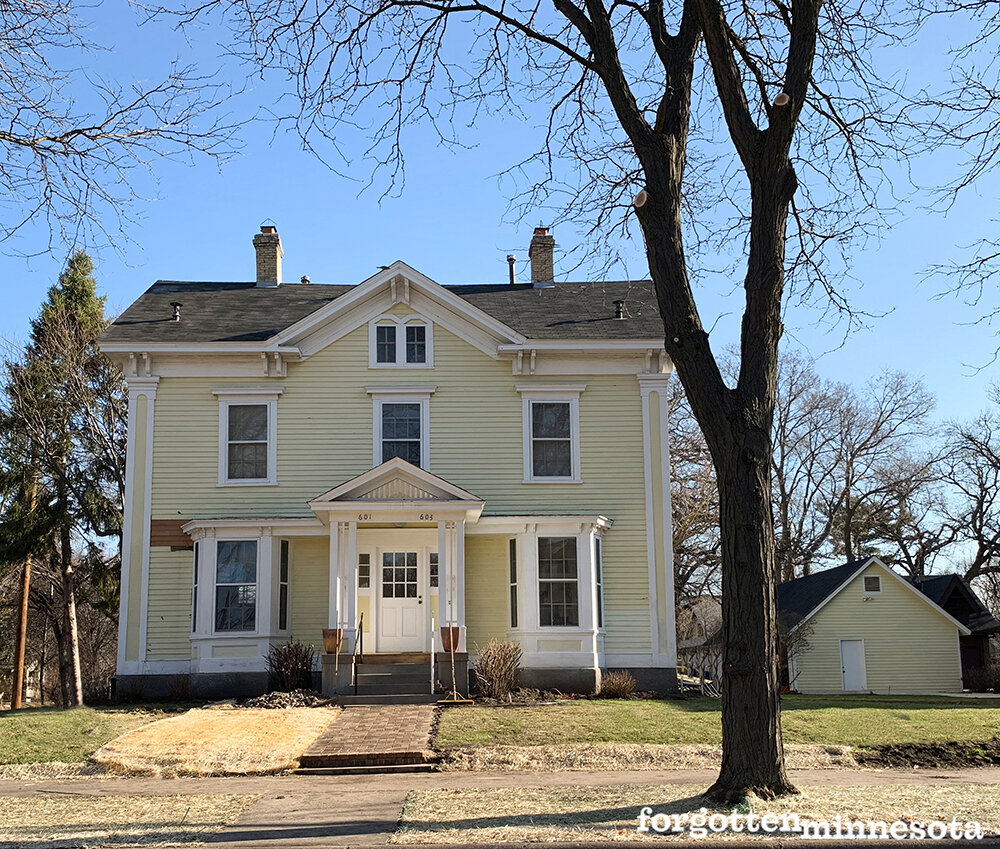The Horatio and Charlotte Van Cleve House
On March 22, 1836, Charlotte Ouisconsin Clark married Lieutenant Horatio Phillips Van Cleve a few months before her 17th birthday. Horatio was a noted graduate of West Point Military Academy and Second Lieutenant with the United States Fifth Infantry Regiment. He was serving frontier duty at Fort Winnebago in Wisconsin Territory when he met Charlotte in 1833. She was one of the first white children to be born in the territory. In fact, her middle name, Ouisconsin, is the French spelling of Wisconsin.
After several years at Fort Winnebago, the couple moved to Ohio, then Missouri, and finally Michigan before settling in the Minnesota Territory in 1856. The couple moved to Long Prairie and started a farm. After five years on the farm, 51 year-old Horatio received an appointment to colonel of the Second Minnesota Volunteer Infantry Regiment in 1861. He served throughout the Civil War and took charge of Union forces at Murfreesboro, Tennessee beginning in 1863. After Horatio left for the war, Charlotte moved the family to a home on University Avenue in St. Anthony (now Northeast Minneapolis).


Charlotte later purchased a two-story Greek Revival home on Fifth Street SE that included two, quarter-acre lots and a barn, for $2,600. In a letter from Charlotte to Horatio dated May 4, 1862, Charlotte described the new house for her husband: “I wish you could know what a nice home we have. Upstairs there are two nice large bedrooms. Lizzie and Mary [their daughters] occupy one and the boys the other. Besides these, there is a nice room for the girls and a large airy attic overhead.
On the next floor are a nice large hall, a fine parlor sitting room, library, and our room which is the most pleasant nursery we have ever had, with two nice large closets, one of which I use for a wash closet and the other for a store closet besides leaving plenty of room for hanging up clothes, etc. In the basement is a beautiful dining room, kitchen cellar, pantry, and washroom. All the rooms except the sitting room have fine closets. There is a good cistern in the washroom and a good well in the shed. The shed is very large and convenient, containing a privy which is used in summer. There is one for winter use in the washroom. There is a wagon shed connecting the woodshed with the barn which enables one to go to the barn without being exposed to the weather. The barn is very roomy and comfortable and there is a fine henhouse and yard connected to it.”
After mustering out in 1865, Horatio returned home to Minnesota and served as Adjutant General. Charlotte became the first woman elected to the Minneapolis Board of Education and served from 1876 to 1878. She also founded the Sisterhood of Bethany and was instrumental in the incorporation and operation of Bethany Home in 1879. Bethany Home helped women that were disregarded by society, such as prostitutes and unwed pregnant girls, to better their lives. Later, Charlotte became an active voice in women’s suffrage activities and authored several books and articles about Minnesota history.


Horatio and Charlotte lived in their home on Fifth Street SE until their deaths—Horatio in 1891 and Charlotte in 1907. The house only remained in the Van Cleve family until the 1920s, but Horatio and Charlotte’s legacy lingers throughout the east side of Minneapolis. Because only minor alterations were made to the house, it was placed on the National Register of Historic Places in 1976. Van Cleve Park at 15th and Rollins Avenue SE was named after Horatio in 1891, and the Charlotte O. Van Cleve school was built at 2420 Madison Street NE in 1895.
During the 1862 Battle of Stone River in Tennessee, Horatio was wounded in the knee and his beloved horse, Bessie, received a shoulder wound from the same bullet. They both recovered from their injuries and finished the war without further incidents. After the war, Bessie returned home with Horatio and became Charlotte’s carriage horse and a favorite among their 12 children. When Bessie died at age 20, she was buried near the barn behind the house. In remembrance, the Van Cleve children decorated her grave with wreaths and carrots on each anniversary of her death.
Their house was renovated into two condominiums in 1988.
